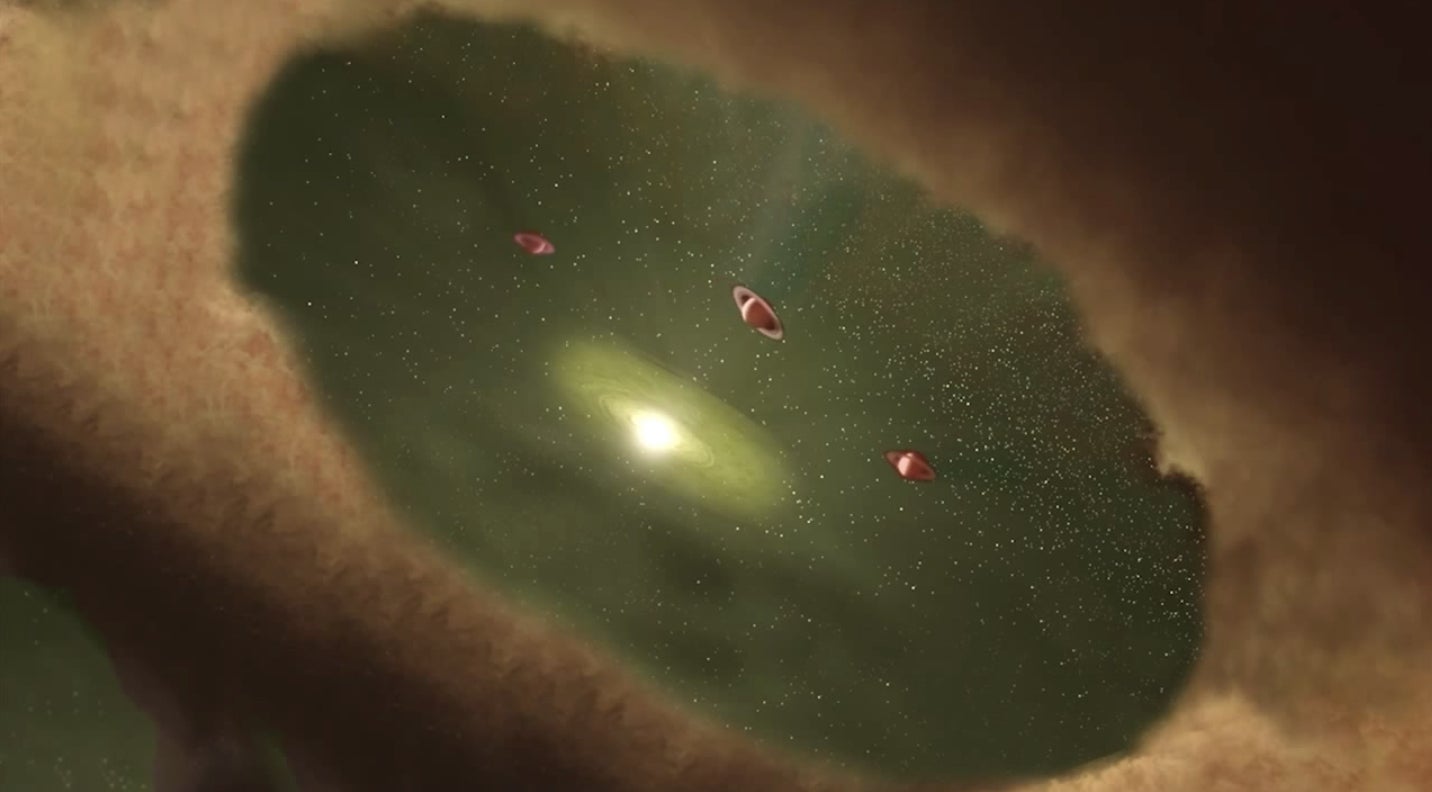Watch a new planet being born from cosmic dust
For the first time, astronomers have spotted the formation of a new planet as it happens—well, not in real time, exactly, given that the planet is about 450 light years away from Earth, but close enough. Never before have researchers been able to capture photographic evidence of this process in action.


For the first time, astronomers have spotted the formation of a new planet as it happens—well, not in real time, exactly, given that the planet is about 450 light years away from Earth, but close enough. Never before have researchers been able to capture photographic evidence of this process in action.
The “protoplanet,” LkCa 15b, looks to be accumulating cosmic dust as it orbits around a two million year-old star called LkCa 15. Two other potential new planets, named LkCa 15c and LkCa 15d, are also orbiting the star.
In the words of Los Angeles Times reporter Karan Kaplan, what astronomers have imaged here is “like an ultrasound for planets.”
…the researchers were convinced that the two objects they saw were planets in the making. By matching up their observations with the laws of physics, they determined that the most likely way these planets are being made is through an “accretion disk model,” in which an object accumulates the gas and dust around it. It’s like a junior-varsity version of the way stars form.
The animation at the top of this post appears courtesy of the University of Arizona, where graduate student Steph Sallum, who did much of the work on this discovery, is pursuing her PhD. Sallum collaborated with Stanford’s Kate Follett and other colleagues, using the world’s largest telescope, located in Arizona, and the Magellan Adaptive Optics telescope system, which is operated by the University of Arizona and located in Chile.